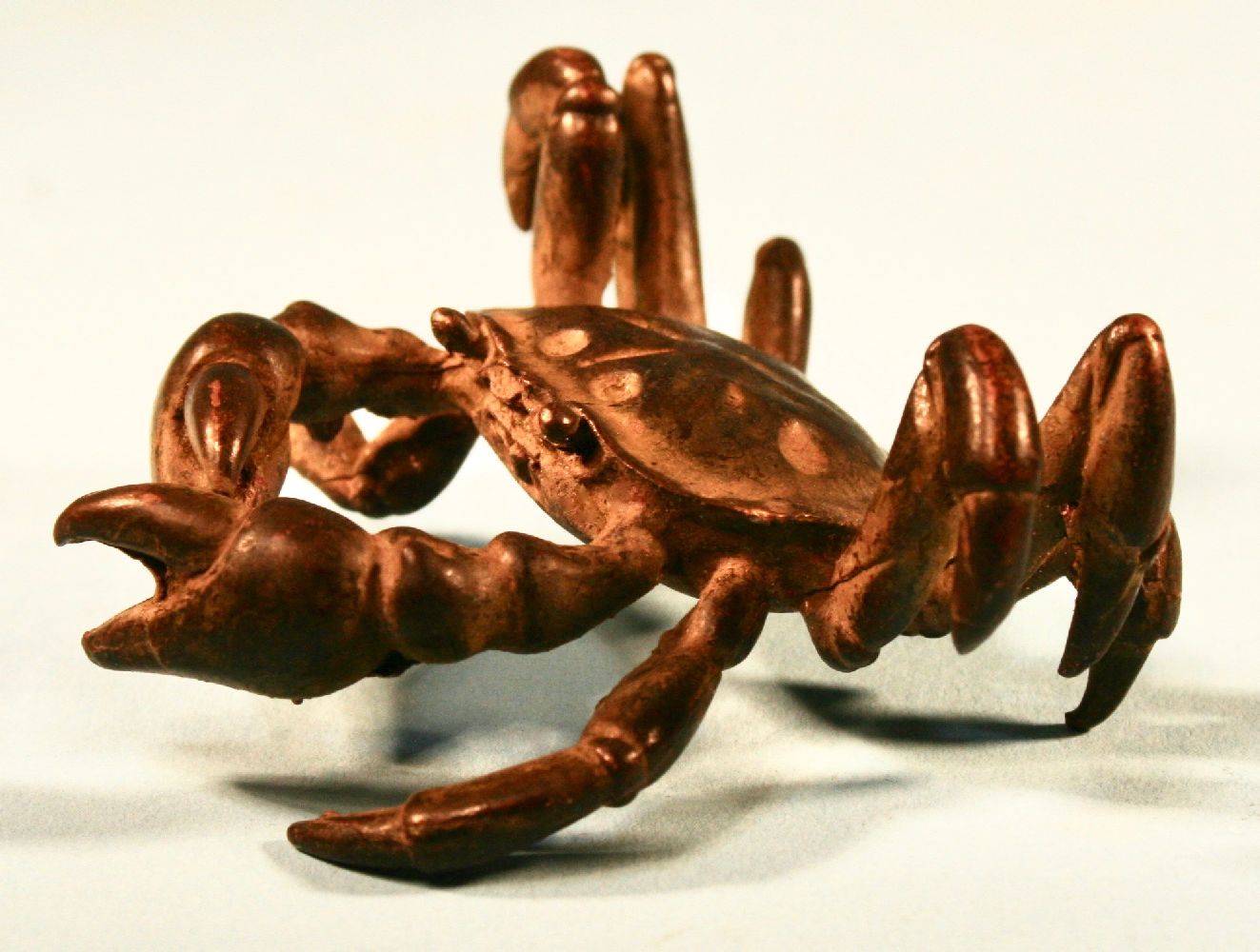

Title: Little Lost Wax Bronze Rock Crab Crustacean Sculpture
Shipping: $29.00
Artist: N/A
Period: Contemporary
History: N/A
Origin: N/A
Condition: Excellent
Item Date: N/A
Item ID: 6782
A wonderful little vintage Bronze Rock Crab made by hand. Great artistry. A Fantastic look it would make a great statement in any room. Very heavy for a little crab. Crabs are decapod crustaceans of the infraorder Brachyura. Crabs are generally covered with a thick exoskeleton, composed primarily of highly mineralized chitin, and armed with a single pair of chelae (claws). Crabs are found in all of the world's oceans. The earliest known “lost-wax” castings date from the early dynasties of Egypt, nearly 7,000 years ago, when metal was poured into “investments” of fired clay that had been shaped with the help of wax that was melted, or “lost”. Then, sometime between 4,000 and 3,000 B.C., bronze was discovered, probably by accident, as being a metal that was harder than copper or tin alone. Thus began the era known as the Bronze Age. Ancient “lost-wax” bronze castings have withstood the centuries, visually telling the tale of past cultures, their religions, and their social structures. For example, Chinese bronzes depicted ceremonial images; Indian and Egyptian castings symbolized deities; Africans cast images of nature; and the Greeks recreated the human form. The lost-wax process for casting bronze hasn't changed much since the Renaissance. There have been technological advances in materials engineering, which allow for more efficient production and more consistent quality, but we still employ similar techniques to the ones our ancestors used during the Bronze Age.
Link: https://en.wikipedia.org/wiki/Cancer_(constellation)#Names
Both the constellation Cancer and the astrological sign Cancer are named after the crab, and depicted as a crab. William Parsons, 3rd Earl of Rosse drew the Crab Nebula in 1848 and noticed its similarity to the animal; the Crab Pulsar lies at the centre of the nebula. The Moche people of ancient Peru worshipped nature, especially the sea, and often depicted crabs in their art. In Greek mythology, Karkinos was a crab that came to the aid of the Lernaean Hydra as it battled Heracles. One of Rudyard Kipling's Just So Stories, The Crab that Played with the Sea, tells the story of a gigantic crab who made the waters of the sea go up and down, like the tides.
The modern symbol for Cancer represents the pincers of a crab, but Cancer has been represented as many types of creatures, usually those living in the water, and always those with an exoskeleton.
In astrology, Cancer is the cardinal sign of the Water trigon, which is made up of Cancer, Pisces, and Scorpio. It is not considered a negative sign, whose domicile, or ruling planet, is the Moon. Though some depictions of Cancer feature a lobster, the sign is most often represented by the crab, also a woman by the ocean has been depicted near based on the Karkinos, a giant crab that harassed Hercules, during his fight with the Hydra.